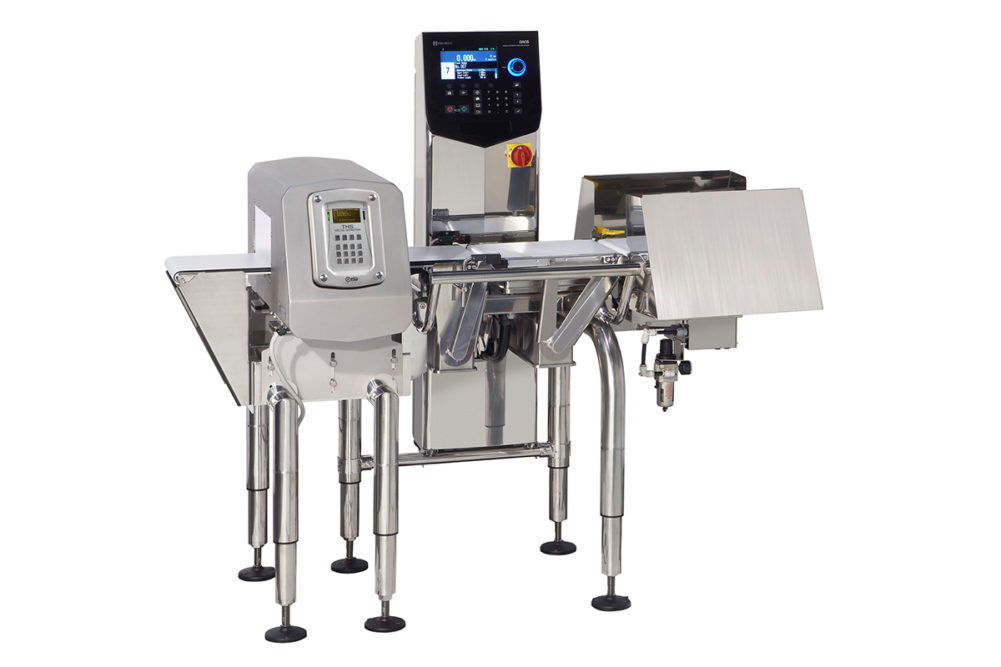The product, packaging and the goal of the bakery will help determine which inspection system to use and at what level will be needed.
“Generally, metal detection is going to be your go-to for contaminant detection,” said Eric Garr, regional sales manager for Fortress Technology. “By far, they’re the best value, they’re the easiest, safest and most reliable.”
Bakers first need to understand how well metal detectors work with their products. Equipment manufacturers can conduct tests and provide reports on what’s best for the product. The more sophisticated the metal detector, the more data it will generate.
“If reporting is necessary, then a data storage capability is required,” said Nelson Leite, vice president of sales and marketing, ABI Ltd. “If operator interfacing is required, then an HMI or PC-based interface is required.”
The level of sensitivity required for the product and how it’s packaged will impact the amount of detection required as well, said Camilo Sanchez, metal detection product line manager at Mettler Toledo. Metal detectors pick up all metals, and some can be programmed to scan for only magnetized metals, which allows them to inspect foods baked in aluminum pans like pies.
X-ray machines can also be used to inspect products. They find contaminants based on product densities, so a change in density would trigger a rejection. Products and packaging that don’t work well with metal detectors, where the target contaminant is not metallic, turn to X-ray systems.
“Foil packaging makes it unfeasible to use a metal detector,” Mr. Garr said.
Deciding on the right inspection system isn’t easy as products and equipment continue to change, said Todd Grube, product manager inspection systems at Heat and Control Inc.
“The technology in inspection and detection equipment continues to advance, so food processors can determine the necessary level of their quality control program and, if necessary, utilize more sophisticated inspection equipment that detects smaller foreign objects, reduces false rejects and handles a wider range of products to ensure maximum food safety with higher productivity,” he said.
The product’s size and its moisture content will determine how a bakery’s inspection system is set up.
“For products such as bread or whole cakes, a metal detector that can handle fluctuations in temperature and high moisture and still achieve high sensitivity would be needed in order to be confident metal is being detected and rejected,” Mr. Sanchez said. “In the instance of a dry product such as a sleeve of crackers, it would not necessarily require any detector with bells and whistles.”
Product density may play a part in the level of power required for accurate detection, Mr. Leite said.
“In general, the fundamental methods are the same, but the size of the system may differ,” he noted.
Metal detectors can be used all along a bakery line.
“The first metal detector will almost always be at the end of the line,” Mr. Garr said, “The reason being, once it’s in the package, nothing else is going to enter the product.”
He said that some bakeries install a redundant machine at the end of the line. This allows them to continue running and shipping products safely even if one of the machines breaks down.
“What they should be doing is identifying potential places where contamination can be introduced,” he added. “It may be you want to place it downstream or upstream of a grinder.”
One tricky element of inspection systems involves removing the rejected products without causing a disturbance to the rest of the line.
“Sometimes an air blast is used, which is great because it’s so simple, reliable and it’s very fast,” Mr. Garr said. “But if the product is heavier than a kilogram or so, an air blast isn’t so effective, so we’ve got to go to a kicker that will push the product off the belt.”
Placing metal detectors earlier in the process, even scanning raw products coming into the factory, helps bakers minimize waste because they can identify a problem before it affects more products, Mr. Grube said.
“Adding metal detectors to the front of production lines, such as inspecting incoming ingredients, will ensure that no metal contamination enters the process where it could damage equipment and/or be broken down into smaller pieces that may go undetected at the end-of-line inspection,” he said.
Keeping a system running in tip-top shape means following the preventative maintenance instructions and testing the system.
“Performance testing with samples of contaminants should be conducted at regular intervals to ensure systems are running to spec,” Mr. Sanchez said.
Mr. Garr emphasized the importance of bringing in experts as recommended by the manufacturer.
“Factory-trained technicians should be utilized for periodic validation/calibration services,” he said. “There are a lot of third parties out there that offer calibration services but be wary. They may not fully understand all the brands and designs utilized.”
And properly training bakery staff on the system can help reduce headaches down the road.
“The training phase is really important,” said Erica Vannini, sales and customer service, EyePro System. “We have software and hardware manuals to use with our system. We also work on an LMS (learning management system) platform, so we have videos and presentations available online for our customers to help them use and maintain the equipment and do continuous training.”
As with any new equipment, bakers should figure out what they need, do their research and consult the experts.
“It comes down to what’s going to give you the best value for your product,” Mr. Garr said. “What’s going to be the best solution for your contamination problems.”
This article is an excerpt from the June 2021 issue of Baking & Snack. To read the entire feature on Metal Detection, click here.






